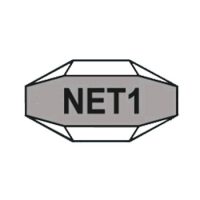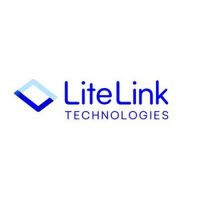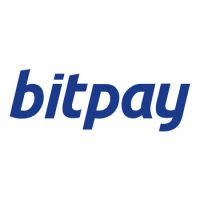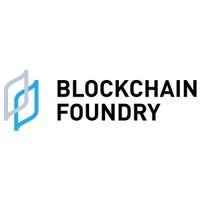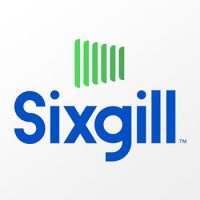Blockchain
The Swiss financial industry has successfully traded and settled tokenized investment products
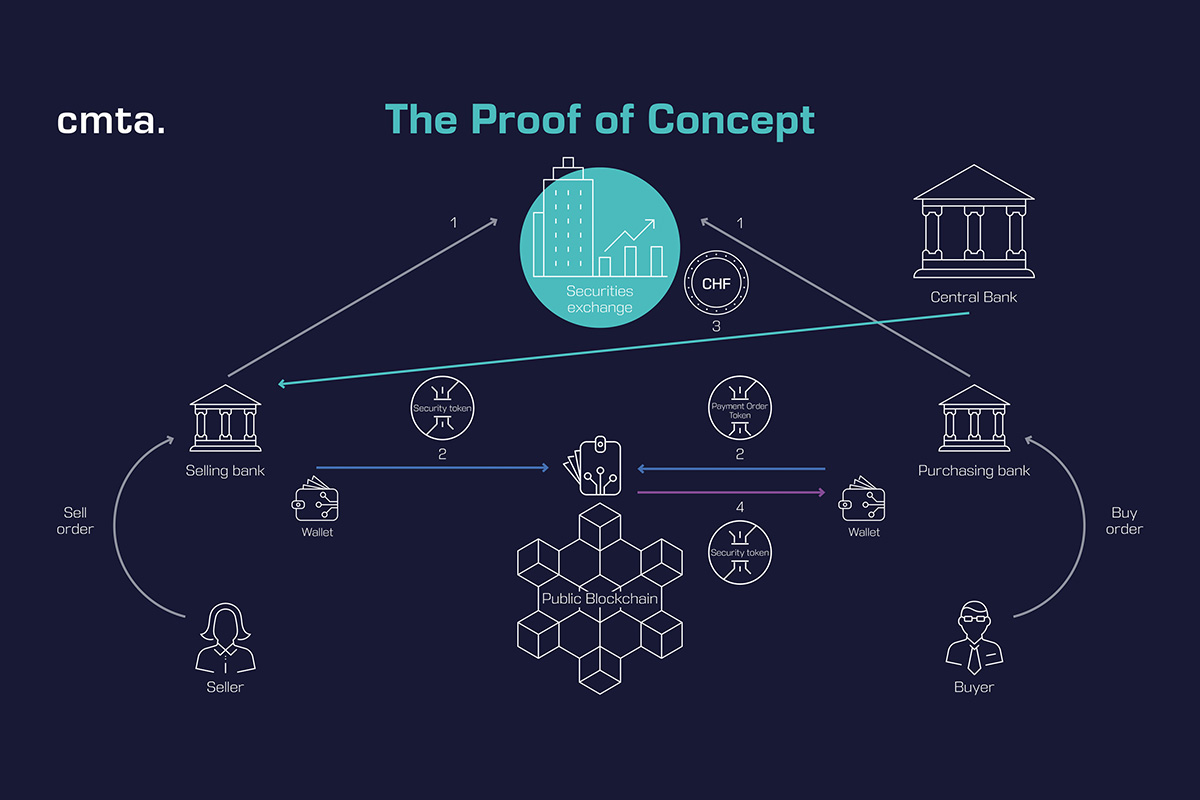
For the first time, key players in the Swiss financial industry successfully developed and tested a novel settlement mechanism for tokenized investment products on a public blockchain testnet infrastructure. A smart contract, developed by the Capital Markets and Technology Association (the CMTA), allows for streamlined processes, reduces complexity, raises security, and eliminates counterparty risks from trades. The CMTA’s proof of concept marks a milestone for the Swiss financial industry.
The proof of concept involves:
- the issuance of tokenized investment products recorded on an Ethereum test blockchain,
- the trading of these products in Swiss francs on a regulated Swiss securities exchange, and
- the settlement of trades through a smart contract developed by the CMTA.
These three distinct operations – issuance, trading and settlement – all happened within hours, when they take days to unfold in a traditional financial environment.
“We are very proud to have developed this groundbreaking mechanism with numerous partners from the financial and technology industries,” says Jacques Iffland, Chairman of the CMTA. “It will enable the industry to increase efficiency, simplify cross-border settlement and improve the quality of service. And customers will benefit from the efficiency gains.”
Vontobel and Pictet each issued an actively managed equity certificate representing a basket of equities, while Credit Suisse issued a structured note, which were associated with digital tokens recorded on an Ethereum test blockchain, a process commonly referred to as “tokenization”. These securities were then traded on the platform of BX Swiss, a FINMA regulated Swiss securities exchange. The trades were settled bilaterally on the blockchain. To do so, the participants used an on-chain mechanism that secures the parties’ obligations. The settlement in fiat currency (Swiss franc) was made possible by an application called DLT2Pay, a product of targens, that connects the blockchain with the Swiss Interbank Clearing (SIC), the real-time gross settlement (RTGS) payment system of the Swiss National Bank. The proof of concept leveraged the CMTA’s standard token format and smart contract (CMTAT), and another smart contract that replicates the delivery-vs-payment functionality of traditional settlement systems. The creation, security aspects and technical operation of the smart contracts, were carried out under the leadership of Taurus, whose technology was used to issue and manage the structured products across their full lifecycle.
The proof of concept was developed and carried out under the aegis of the CMTA, with the support of representatives of BX Swiss, Credit Suisse, Homburger, Lenz & Staehelin, METACO, Pictet, targens, Taurus, UBS and Vontobel.
The proof of concept lays the foundation for an alternative Swiss post-trade infrastructure that functions without central parties (central counterparty and central securities depositary) and enables participating banks to benefit from cost advantages along the entire value chain of securities transactions (issuance, settlement and custody).
Daniel Gorrera, Head Digital Assets at Credit Suisse, said: “The transactions carried out today clearly establish that products tokenized on a public blockchain can be traded on regulated trading platforms and that the settlement of transactions on tokenized products can be carried out in fiat currencies without creating any counterparty risk. The successful proof of concept is a crucial first step for unlocking the benefits of tokenization in the future.”
Steve Blanchet, Head of Group Tech Strategy and Innovation at Pictet said: “Tokenization is a key strategic element for the future of asset management. It enables issuers to streamline the processes that govern the creation of investment products in a way that is currently not achievable with traditional infrastructures, and to drastically reduce time-to-market. With the solutions we tested in the proof of concept, processes that are currently matters of days can be reduced to a few hours, and eventually down to minutes or less.“
Anna-Naomi Bandi-Lang, Structuring – Credit Solutions at UBS Investment Bank said: “Tokenization has many use cases, but for it to become an established feature of modern financial markets, the ability to trade tokenized products in major currencies and through regulated trading venues is key. The CMTA’s proof of concept demonstrates that there is a path to achieve this goal.”
Marco Hegglin, Chief of Staff Structured Solutions & Treasury at Vontobel, said: “This proof of concept is just a first step on the way to defining a new standard for structured products in the form of a smart contract. Structured products are not only innovative products, they are also predestined for state-of-the-art technology. With a fully automated smart contract covering the entire lifecycle, the possibilities that can be expressed in pure code language are almost unlimited, and the blockchain technology can help designing new generations of financial products.”
Matthias Müller, Head of Markets at BX Swiss, said: “First of its kind, this proof of concept demonstrated that trades carried out on-exchange can be settled on a public blockchain directly between participants. It is no longer necessary for the parties to secure a transaction by transferring tokens or cash to the exchange ahead of trade. This is a significant advantage in terms of speed, cost, and risk management. The smart contract used for the settlement eliminates the counterparty risk that would exist if the cash leg and the asset leg of the transactions were completed independently from one another. The new regulatory regime for DLT-based trading platforms will allow BX Swiss to take full advantage of these developments.”
Jean-Philippe Aumasson, co-founder of Taurus SA and Chair of the CMTA’s Technology Committee, said: “We are delighted to see a consensus building around the use of open standards for DLT-based market infrastructures and to see that the CMTA’s smart contracts are being recognized as reliable technology in this respect. Using collaboratively developed open-source smart contracts reduces development and due diligence costs for participants and contributes to the reliability and efficiency of the Swiss fintech ecosystem.”
Samuel Bisig, Business Development and Product Manager at targens GmbH in Stuttgart, said: “targens’ DLT2Pay solution provides the missing link between a DLT/blockchain and a payment transaction protocol (here: central banks’ clearing systems) for the cash settlement of securities transactions. As long as central bank digital currencies (CBDCs) are not available, such a “trigger solution” is key if digital assets are to be traded otherwise than in private cryptocurrencies.“
Blockchain
Blocks & Headlines: Today in Blockchain – May 14, 2025

Blockchain’s evolution continues at breakneck speed, shifting from niche applications into mainstream finance, supply-chain integrity, and social impact initiatives. Today’s briefing spotlights five stories that illustrate this maturation: Cardano’s seamless asset integration in the privacy-focused Brave browser; a strategic partnership between Cokeeps and Maybank Trustees to bring tokenized wealth management to institutional clients; Ripple’s leadership framing blockchain as the dismantler of traditional banking silos; the UNDP’s pilot using distributed ledgers to improve HIV treatment tracking across Eurasia; and a novel IoT-blockchain collaboration to authenticate fine wines end-to-end. In this op-ed–style roundup, we analyze not only the mechanics of each announcement but also their broader implications for Web3’s scaling, DeFi’s credibility, and blockchain’s social-good potential.
1. Cardano Integrates Native Blockchain Assets into Brave Browser
What Happened
On May 13, Cardano foundation engineers unveiled a collaboration with Brave Software to natively support Cardano blockchain assets—ADA tokens and native tokens—within Brave’s wallet panel. Users can now view balances, send ADA, stake directly, and interact with back-end metadata for Cardano NFTs, all without leaving the Brave interface. This move follows Brave’s earlier Ethereum and Solana integrations, signaling a multi-chain future for privacy-centric browsers.
Analysis & Implications
-
User Experience Leap: By embedding Cardano functionality at the browser level, Brave eliminates friction for onboarding new users who would otherwise juggle external wallets or browser extensions. Easier access to staking and NFT markets could drive stronger engagement for Cardano’s ecosystem.
-
Multi-Chain Convergence: Brave’s strategy underscores the shift from siloed blockchain apps toward unified, chain-agnostic user experiences. As Web3 users demand seamless access across protocols, wallets and browsers will compete to offer the most inclusive multi-chain dashboards.
-
Cardano’s Market Position: For Cardano, this integration is a validation of its low-fee, high-throughput value proposition. While Ethereum remains dominant in DeFi and NFTs, Cardano’s energy efficiency and growing dApp roster may attract users seeking alternatives—especially if wallet UX barriers continue to fall.
Opinion
Brave’s embrace of Cardano assets exemplifies the coming era of “wallet-agnostic” access, where the browser becomes the front door to multiple blockchains. For Cardano, it’s a critical trust signal that boosts on-ramps and could accelerate liquidity in its DeFi protocols. Yet success hinges on robust in-browser security and responsive UI design—any wallet bugs or performance lags will erode the trust this collaboration seeks to build.
Source: CoinDesk
2. Cokeeps & Maybank Trustees Develop Blockchain Asset-Management Solutions
What Happened
Malaysia’s Cokeeps, a digital-asset custody pioneer, has partnered with Maybank Trustees to design and deploy tokenized asset-management platforms for institutional investors. The joint solution leverages a permissioned blockchain to record ownership of tokenized bonds, real-estate funds, and alternative-assets, while integrating smart-contract–driven compliance checks and real-time audit trails.
Analysis & Implications
-
Institutional Adoption: By combining Cokeeps’s custody technology with Maybank’s regulatory expertise and trustee services, the duo addresses two perennial barriers to institutional crypto investment: custody risk and compliance certainty. This model could serve as a blueprint for other Asia-Pacific custodians.
-
Tokenization Benefits: Tokenized securities on a shared ledger can reduce settlement times from days to seconds, lower transaction costs, and open fractional-ownership models—broadening access to asset classes historically reserved for high-net-worth individuals.
-
Regulatory Alignment: Embedding KYC/AML logic into smart contracts ensures that every token transfer automatically enforces jurisdictional rules. As regulators worldwide demand transparent on-chain auditability, such integrated controls will become table stakes for institutional offerings.
Opinion
This collaboration exemplifies how established financial institutions can embrace blockchain without ceding control. Rather than disrupting Maybank’s trustee role, tokenization enhances it—transforming trustees from manual record-keepers into guardians of programmable assets. The real test will be scale: can the platform handle high-volume trading with uncompromised security and consistency? If so, we may see a wave of legacy banks repackaging their services through blockchain rails.
Source: The Star
3. Ripple Board Member: “Blockchain Is Unbundling Banks”
What Happened
On May 14, Stuart Alderoty, a board member at Ripple Labs, declared in an industry webcast that blockchain technology is fundamentally “unbundling” traditional banking services—payments, settlements, custody, and compliance are each evolving into modular, chain-native offerings. He argued that banks will increasingly source best-of-breed infrastructure from fintech and blockchain providers rather than maintain monolithic, in-house systems.
Analysis & Implications
-
Modular Finance: Alderoty’s vision anticipates a composable finance ecosystem: banks orchestrate various on-chain services—liquidity pools, cross-border rails, automated KYC—via APIs, akin to how e-commerce platforms integrate third-party payment gateways and fraud-prevention tools today.
-
Competitive Pressure: Incumbent banks face competition not only from neobanks but also from protocol-level service providers (e.g., on-chain oracles, decentralized exchanges). To retain clients, banks must either build or partner to offer seamless, blockchain-enhanced products.
-
Industry Collaboration: Ripple itself underscores this shift: its On-Demand Liquidity service unbundles foreign-exchange and settlement from legacy correspondent banking, delivering real-time cross-border payments at reduced cost.
Opinion
The unbundling thesis places a premium on interoperability and standards. Without common protocols, financial services risk siloed “rails” that mimic today’s fragmented SWIFT-based processes. Collaborative industry consortia—like the U.K.’s Project Rosalind or Japan’s mHUB—will be crucial to define shared messaging formats and governance frameworks. For blockchain to truly disaggregate banking, ecosystem players must coalesce around open, secure standards.
Source: U.Today
4. UNDP’s Big Ideas: Using Blockchain to Fight HIV in Eurasia
What Happened
The United Nations Development Programme (UNDP) launched its “Big Ideas” pilot in Eurasia, deploying a blockchain-enabled platform to manage HIV treatment data across multiple countries. The solution uses a hybrid public-private ledger to ensure patient anonymity while providing authorized clinics and NGOs with secure, immutable access to treatment adherence records and drug-dispensation logs.
Analysis & Implications
-
Data Privacy & Integrity: The hybrid architecture combines zero-knowledge proofs on a public chain—verifying treatment events without exposing personal health information—with a consortium chain that controls participant permissions. This dual model balances transparency and confidentiality.
-
Cross-Border Collaboration: HIV programs often span regions with varying healthcare regulations. A shared blockchain registry simplifies data exchange, reducing duplication and ensuring each patient’s history is up to date, even when they move between clinics or countries.
-
Scalability & Sustainability: Running on energy-efficient proof-of-stake networks and leveraging off-chain data storage for sensitive medical records, the platform minimizes transaction costs while maintaining high throughput—essential for scaling across thousands of patients.
Opinion
UNDP’s blockchain pilot represents a maturation of social-impact use cases—from proof-of-concepts to production-grade systems. By prioritizing patient privacy and regulatory alignment, this model could extend to other health-data challenges, such as vaccine distribution or epidemic tracking. The key will be forging long-term partnerships between multilateral organizations, local health authorities, and blockchain providers to sustain and expand the network beyond the pilot phase.
Source: UNDP
5. Identiv, ZaTap & Genuine Analytics Digitally Authenticate Fine Wines
What Happened
Identiv, ZaTap, and Genuine Analytics have unveiled a joint solution that employs specialized IoT tags and blockchain to verify the provenance of fine wines. Each bottle is fitted with a tamper-evident sensor that records temperature, humidity, and location data onto a permissioned ledger. Consumers can scan an NFC-enabled label to view the wine’s end-to-end history—from vineyard pressing to cellar aging and global shipping.
Analysis & Implications
-
Counterfeit Mitigation: The fine-wine market suffers from widespread fraud, with counterfeit bottles estimated to comprise up to 20% of high-end sales. Immutable provenance records and sensor-backed condition reports significantly raise the bar for authenticity verification.
-
Consumer Trust & Engagement: Beyond security, the solution enhances the collector experience—buyers gain confidence in their purchase and a richer narrative around each vintage’s journey, potentially commanding higher resale values on secondary markets.
-
Cross-Industry Potential: This IoT-blockchain fusion can be adapted for other luxury goods—artworks, haute horlogerie, or premium spirits—where provenance and condition are paramount.
Opinion
By blending real-world data streams with ledger immutability, this collaboration exemplifies blockchain’s most compelling value proposition: trusted digital twins of physical assets. However, the system’s integrity depends on robust IoT security—if sensors are spoofed or tampered with, the chain of trust breaks. Stakeholders must therefore enforce secure tag provisioning, periodic audits, and tamper detection measures to uphold the solution’s credibility.
Source: PR Newswire
Conclusion
Today’s blockchain dispatch underscores a pivotal shift: decentralized ledgers are weaving into the fabric of finance, social impact, and supply-chain integrity. From Brave’s browser-level Cardano support to tokenized asset platforms, from the unbundling of banking services to health-data pilots and luxury-goods authentication, blockchain is proving its versatility and maturing beyond speculative markets. As on-chain and off-chain worlds converge, interoperability, security, and standards will determine which projects scale and which falter. For stakeholders across Web3, DeFi, and enterprise IT, the imperative is clear: embrace modular architectures, uphold rigorous governance, and focus on real-world value—only then will blockchain realize its promise of trust, transparency, and transformative efficiency.
The post Blocks & Headlines: Today in Blockchain – May 14, 2025 appeared first on News, Events, Advertising Options.
Blockchain
Investview, Inc. (“INVU”) Reports Financial Results and Current Operational and Financial Highlights for the First Quarter Ended March 31, 2025
Blockchain
CapitalRevo Reveals Powerful AI-Driven Features Ushering in a New Era of Smart Trading

CapitalRevo AI
-

 Blockchain Press Releases7 days ago
Blockchain Press Releases7 days agoHTX and Justin Sun Launch $6M Mars Program Special Edition, Offering One User a Historic Space Journey
-

 Blockchain6 days ago
Blockchain6 days agoBitget Blockchain4Youth sostiene l’innovazione del Web3 e dell’IA all’hackathon “Build with AI” di Google Developer Group
-

 Blockchain Press Releases6 days ago
Blockchain Press Releases6 days agoBybit Surpasses 70 Million Users, Reinforces Commitment to Transparency and Institutional Growth
-

 Blockchain6 days ago
Blockchain6 days agoBlocks & Headlines: Today in Blockchain – May 9, 2025 | Robinhood, Solana, Tether, China, Women in Web3
-

 Blockchain2 days ago
Blockchain2 days agoBlocks & Headlines: Today in Blockchain – May 12, 2025 | Rootstock, Zimbabwe Carbon Registry, Fastex, 21Shares, The Blockchain Group
-

 Blockchain Press Releases2 days ago
Blockchain Press Releases2 days agoBullish partners with the Gibraltar Government and GFSC to pioneer world’s first crypto clearing regulation
-

 Blockchain Press Releases7 days ago
Blockchain Press Releases7 days agoMEXC Lists USD1, Accelerating Global Stablecoin Innovation with World Liberty Financial
-

 Blockchain Press Releases3 days ago
Blockchain Press Releases3 days agoBybit Introduces BOB to P2P: Bolivian Traders Can Now Buy, Sell in Local Currency and Earn Commissions




















